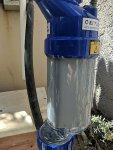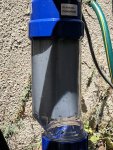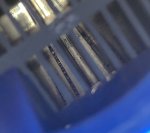- May 3, 2007
- 18,088
- Pool Size
- 20000
- Surface
- Plaster
- Chlorine
- Salt Water Generator
- SWG Type
- Hayward Aqua Rite (T-15)
Then there is likely a very large obstruction in the suction side or the impeller. If the pump is not drawing in air into the pump basket, then it is likely an impeller issue.





